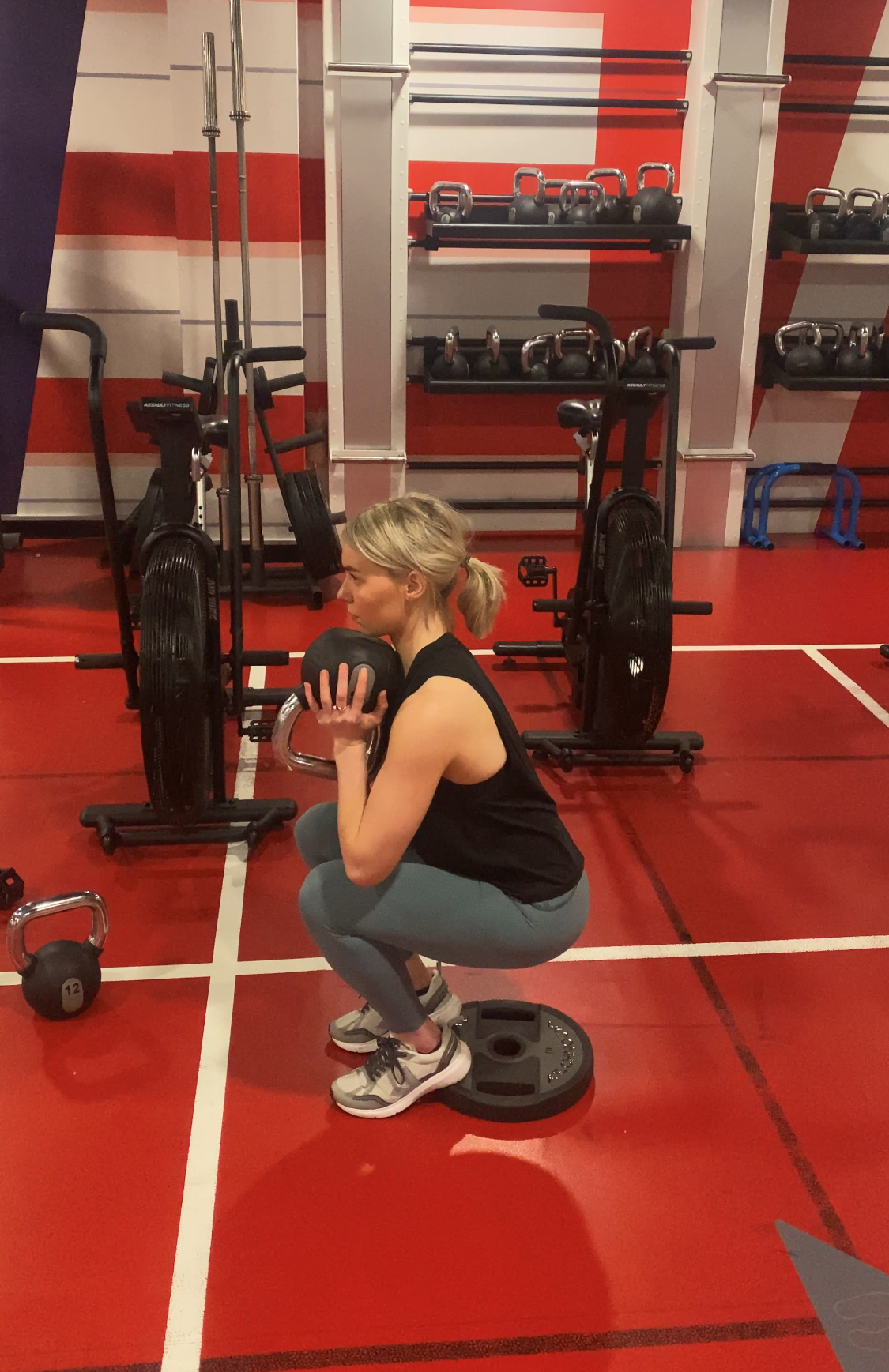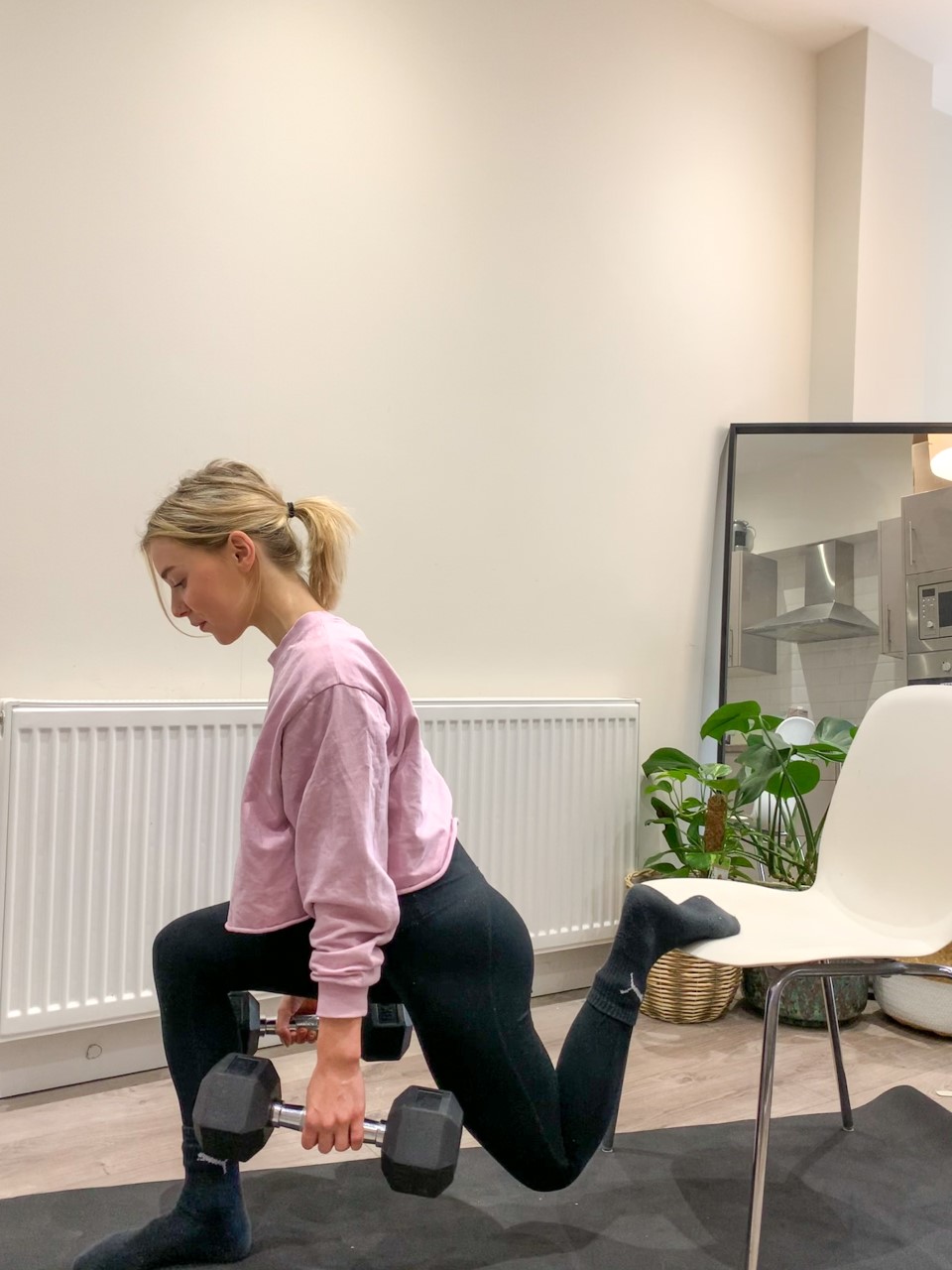Can a lifetime of back pain be eased by strength training and building glute muscle?
You might think that building strong glutes is a vain approach to exercising. It’s understandable, given the trendy aesthetic for a perky bum. But my motivation for hip thrusting and squatting has very little to do with what my lower body looks like.
You see, I’ve dealt with back pain my whole life. Forget the image of an elderly woman unable to bend down because of their dodgy spine – I was 10 years old and spending entire evenings lying on the sofa in agony. It was made worse by gymnastics (perhaps unsurprisingly, as I was spending hours bending myself backwards in bridges and flips) but even days that only involved school and running around the playground ended with me feeling as though my spine was on fire.
You may also like
Back pain: “Adding these 4 hip mobility exercises to my workout routine reduced my lower back pain”
After talking to a doctor, it turned out that I had scoliosis, a curvature in my thoracic spine, which meant that my whole body was out of whack. I quit gymnastics after a few years, occasionally did the exercises given to me by a physio, but mainly thought that this was something I would have to live with.
It wasn’t until I was 18 that I realised there was something I could do to help. After a few months of strength training, I began noticing that I was no longer ending every day in agony. I could sit at my desk and go on long walks without being in pain, and unlike in my gymnastics days, exercise wasn’t leaving me bed bound. Six years on and a few weeks away from the gym or being lazy with my workouts leaves my back feeling pretty sensitive again.

Do glute workouts help with back pain?
While you’ll regularly find me at the pull up bar trying to beat my personal best, it’s my glute training that I really credit with helping my back pain. You see, your glutes are the biggest muscle in your body, and are a key component of your core. When your glutes are weak, it’s very difficult to stabilise other muscles, joints and bones.
Studies show that there’s a link between a lack of glute strength and lower back pain – a 2019 analysis by the University of Newcastle concluded that “weakness of the gluteus medius results in several biomechanical changes that alter the position and stability of the pelvis and may subsequently contribute to lower back pain.”
You may also like
Back pain: 3 pilates moves to alleviate back aches
“Glutes are important for any kind of movement, whether that’s walking or weight lifting,” says osteopath Anisha Joshi. “The problem is that we tend to spend so long sitting on them that they can become weak, and that can result in your quads, hips and lower back taking a lot of load during day-to-day activities.”
During my gymnastics days, I was throwing my body around without having enough glute strength to power my moves, meaning that my lower back was taking on a tonne of extra load (on top of what it was already carrying from my scoliosis). “Having glutes that aren’t engaged also means that they can’t support your posture when sitting, so you end up with poor posture,” adds Anisha.
Not only does the glute strength itself help alleviate some of this back pain, but the very act of exercising your glutes can teach you some important cues. “When doing glute strengthening the work, you learn so much about your body’s correct alignment. You can’t lift weights properly with tension in your lower back; you need to be able to neutralise your spine and release the flare in the ribcage. This encourages people to move out of excessive lordosis, a common posture which sees you stick the bum out and arch the spine, but which is terrible for the back,” says personal trainer Nancy Best.
While a lot of people may think that loading their lower body when they have pre-existing back pain will result in more damage, learning the stability and alignment involved with training will help. “When we say ‘strength training’ or ‘weight lifting’, a lot of people think that they need to do their heaviest one rep of deadlifts. If you start right there with no understanding, you’ll probably trigger some pain. But learning the basics of moving and strengthening the body is definitely safe, and should be prioritised, with supervision,” says Nancy.
While glute strengthening isn’t a cure all by any means (mobility exercises are also essential, as are appointments with specialists, and bad flare-ups do still happen), my lower body workouts have become non-negotiable for me. But there are some moves I really rate for building strength, muscle and stability in my glutes.
You may also like
Strength training: 4 best weighted glute exercises using barbells and dumbbells
Hip thrust
A hip thrust may be an Instagram favourite, but there’s contention among some trainers as to whether it really is the most effective glute strengthening exercise. I think it comes down to personal preference and I love doing a hip thrust over some other weighted exercises because I find it easier to maintain my form and my mind-to-muscle connection in order to really work into the glutes.
“What I love about a hip thrust is that you have the opportunity to neutralise your spine before you lift off the ground,” says Nancy. “Whether you’re doing it with a resistance band, dumbbell or barbell, starting from the floor allows you to tuck your tailbone and consider your alignment so you counteract any curvature before and during your workout.”
How to do a hip thrust
- Sit with the long side of a bench behind you, your legs extended out in front and your back (around bra strap level) leaning against the edge.
- Bend your knees so your feet are flat on the ground, shoulder-width apart.
- Brace your core and tuck in your tailbone by pressing your pubic bone up and the top of your pelvis back.
- Press through your heels and squeeze your glutes to lift your hips off of the floor until your knees are at 90 degrees.
- Keep your head looking forward and don’t flare your ribs throughout the movement.
- Lower your hips back to the ground, keeping your neutral spine position.
You may also like
Glute workout: why hip thrusts are the best muscle building exercise
Bulgarian split squat
“It’s common to have one side of the body that’s weaker than the other side, and that can be caused by many things including functional scoliosis and leaning into one side while sitting or exercising,” says Anisha. “Dumping all of your weight into one side can cause discomfort and it can predispose you to injury.”
Doing single leg work is important to evening out those imbalances, but the split squat is much more stable than other unilateral exercises, which is why I find it so useful to do if my back is giving me a bit of grief. Leaning slightly forward with a straight back, taking my stance wide and putting my back foot flat on the bench allows me to drive through my front heel and work into the glute.
How to do a Bulgarian split squat
- Stand in front of a bench and place your left leg behind you so your toes are flat on the edge of the surface, directly behind your left glute rather than twisted to the side.
- Engage your core by sucking your belly button to your spine as you bend your right knee and lower down towards the floor.
- Pause at the bottom for a second before pressing up through your right heel, ensuring your hips stay straight through the whole move.

Abductor exercises
We often move up and down, but moving side to side is really important. It’s actually the main way to target your glute medius, the aforementioned stabilising part of the glute which sits on the outside of the hip, and is tricky to target with just squats and deadlifts.
I only recently started taking my abductor exercises seriously, spurred on by a dismal few runs during lockdown that ended with knee and back pain. Building strength in those side muscles using the abductor machine at the gym or banded clam exercises is a great place to start.
How to do a clam
- Lie on the floor on your left side with your hand supporting your head.
- With your hips and legs stacked on top of each other, bend your knees to a 45 degree angle.
- Keeping your heels together and left knee pressing into the floor, lift your right knee as high as you can.
- Squeeze at the top then slowly lower.
Follow @StrongWomenUK on Instagram for the latest workouts, delicious recipes and motivation from your favourite fitness experts.
Images: Chloe Gray
Source: Read Full Article